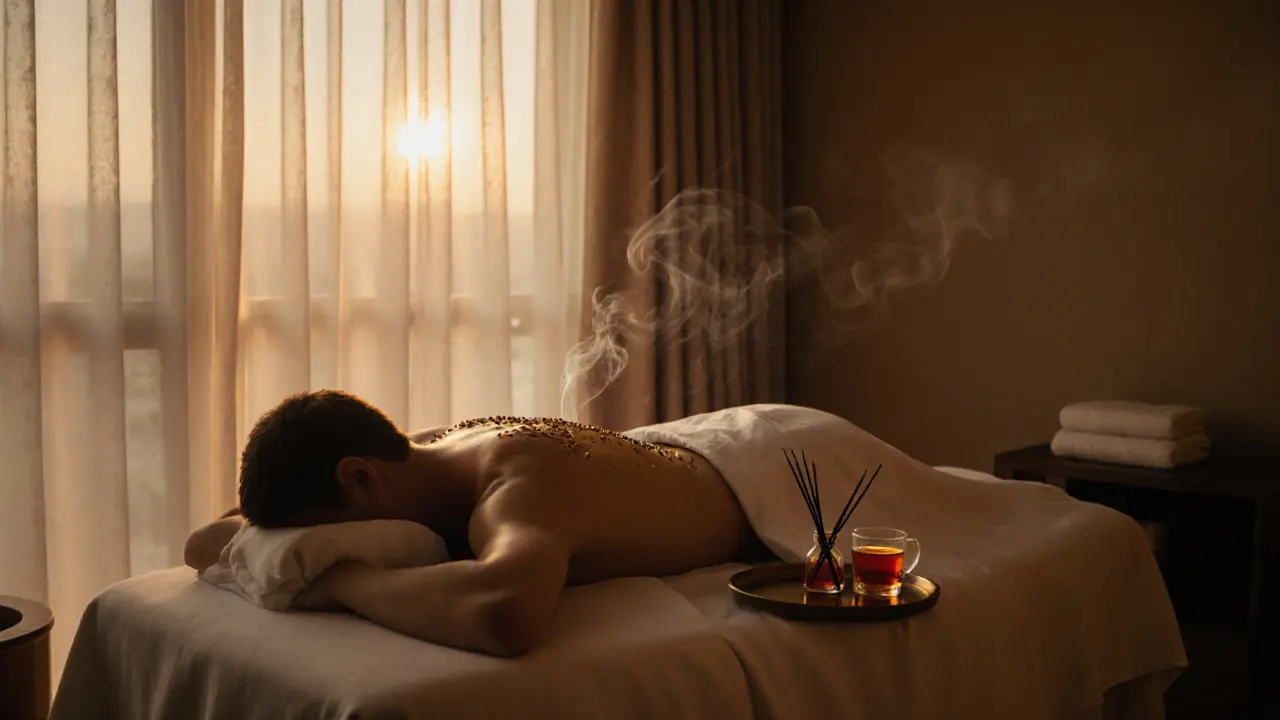Traditional Arabic Massage in Dubai: Authentic Techniques and Where to Find Them
When you think of traditional Arabic massage, a centuries-old healing practice rooted in Middle Eastern culture that blends pressure points, herbal oils, and rhythmic movements to restore balance. Also known as Arabian massage, it’s not just about relaxation—it’s about reconnecting body and spirit in a way few other therapies do. Unlike Swedish or Thai massage, which focus on long strokes or acupressure, traditional Arabic massage uses deep, circular motions, targeted compression, and warm oils like sesame or olive infused with frankincense and myrrh. It’s designed to release tension, improve circulation, and calm the mind—all while honoring ancient Bedouin and Islamic healing traditions.
This style of massage is often part of a broader Arabic spa treatment, a holistic wellness ritual that may include steam baths, body scrubs with argan or coffee grounds, and herbal wraps. Also known as hammam therapy, it’s common in luxury hotels and private wellness centers across Dubai. Many travelers confuse it with Turkish baths or Moroccan rituals, but Arabic massage stands apart in its pacing, oil blends, and the way practitioners engage with the client’s energy flow. You won’t find it in every spa—authentic sessions are usually offered by therapists trained in regional lineages or those who’ve studied in Jordan, Egypt, or Saudi Arabia. The best places in Dubai don’t advertise loudly. They rely on word-of-mouth, quiet rooms with low lighting, and therapists who know when to press hard and when to pause. Some include chanting or soft oud music, while others keep it silent—letting the rhythm of the hands do the talking.
What you get isn’t just a massage—it’s a cultural experience. Practitioners often ask about your sleep, stress levels, and even your diet. They might suggest drinking mint tea afterward or avoiding cold water for an hour. This isn’t fluff—it’s part of the system. In Dubai, where fast-paced luxury dominates, these quiet, intentional sessions are rare gems. You’ll find them tucked inside high-end resorts like the Burj Al Arab, or in hidden corners of Al Fahidi Historical Neighbourhood. Some therapists even offer in-home sessions, bringing the tradition to your villa or apartment.
Don’t assume all "Arabic" massages are the same. Some spas slap on the label for marketing, using standard Swedish techniques with a few drops of oud oil. Real traditional Arabic massage takes time—usually 60 to 90 minutes—and involves full-body work, including the scalp, feet, and even the ears. It’s not always gentle. The pressure can be intense, especially around the shoulders and lower back, but that’s how it releases deep knots. If you’ve ever felt stiff after flying or stressed from a long day in the desert heat, this is the reset button you didn’t know you needed.
For those looking to explore deeper wellness in Dubai, traditional Arabic massage connects to other practices you’ll find in the posts below—from home massage services to luxury spa centers and even Thai and Euro-style treatments. But nothing here matches the soul of this ancient method. Whether you’re staying for a week or just passing through, a real Arabic massage isn’t just a treat—it’s a memory. And once you’ve felt it, you’ll know why so many return for more.
Massage Dubai - Luxe Spa Experiences Await
Discover luxury massage experiences in Dubai-from traditional Arabic rituals to gold-infused therapies. Learn where to go, what to expect, and how to book the best spa sessions in the city.
Dubai Massage - Unwind Like Never Before
Discover the best Dubai massage experiences-from traditional Arabic techniques to luxury hot stone treatments. Learn where to go, what to expect, pricing, and how to avoid tourist traps for true relaxation.

